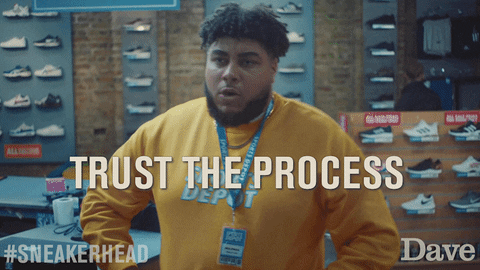29 March 2023 | People and Culture
Creating a foundation for your leadership development programs
By

Melissa’s face was red.
She unclenched her fists and tossed an iPhone with a cracked screen onto his desk.
“Why can’t anyone just listen and do their jobs? I don’t have time for this. I need people to step up and get shit done,” she yelled.
I couldn’t tell if she was looking out the window because he was avoiding eye contact with me or if she forgot I was in the room with her. Then, she caught me looking at the iPhone.
“It still works. I just can’t find time to get a new one.”
She flipped the phone over, hiding the screen, and started checking her emails on her laptop.
“Give me a second,” I told her. “I know you are doing everything you can to keep your company moving in the right direction, but you brought me in to help you out. I want to be sure I understand what’s going on.”
“Here is the problem. I hire people to come in as managers and directors, but nobody can get anything done without me. I’m paying these people more than they’ve ever made in their life, but still, they can’t figure it out. I need everyone to get a lot better immediately. I’m seriously thinking I’m going to have to just let everyone go.”
Melissa knew she needed leaders in her organization, but she didn’t know how to develop them. She was feeling stressed and overwhelmed because of it.
The lack of leadership skills on her team meant she had to spend more time resolving conflict, following up to ensure work was getting completed, and replacing people who were leaving.
She knew what she needed. She just didn’t know how to get there. And she was falling into one of the most common traps of leadership development.
Leadership development is a process, not a promotion

Her approach to developing leaders came in the form of giving people a promotion or a new title. But giving a person a new title doesn’t help prepare them for the role. They will need development and support.
Melissa had no plan to develop her leaders. This is an unfortunately common problem. Even though 83% of employers understand that leadership development is crucial, there is still a huge lack of leadership development in the workplace across the nation.
Back to our conversation…
“I know you want change overnight, and it feels like everything needs to happen right now. But there is no magic wand you can raise to magically have leadership skills developed in your organization. It takes time, patience, and consistency.”
“I don’t have any of that.”
“Well, let’s start with a plan. That way, you will at least have a plan.”
“Fine, what should we do?”
We discussed three steps that would work as the foundation of their leadership development efforts.
- Define Leadership Competencies
- Establish a Mentor Program
- Offer Stretch Assignments to Her Top Performers
Define Leadership Competencies

Leadership competencies give your team a common language to use as part of your development process. Having competencies will allow you to ensure you and your team understand the skills needed to be an incredible leader within your organization.
Here are a few examples of competencies you might use:
- Effective Delegation:
- The ability to assign tasks and responsibilities to team members based on their skills and expertise, fostering trust, and empowering employees to make decisions and take ownership of their work.
- Time Management:
- The skill of prioritizing tasks, allocating resources, and organizing daily activities to achieve both short-term and long-term objectives while maintaining a healthy work-life balance.
- Communication:
- The capacity to convey thoughts, ideas, and information clearly and succinctly, using various methods of communication, ensuring understanding and alignment among team members.
- Emotional Intelligence:
- The ability to recognize, understand, and manage one’s own emotions and those of others, fostering strong relationships, and creating a supportive and inclusive work environment.
- Decision-Making:
- The competency to analyze situations, weigh pros and cons, and make timely, informed, and well-considered decisions that align with the organization’s goals and values.
- Conflict Resolution:
- The skill of identifying, addressing, and resolving conflicts in a constructive manner that maintains positive relationships, encourages open communication, and promotes a collaborative work environment.
- Adaptability and Resilience:
- The capacity to embrace change, adjust to new circumstances, and respond effectively to challenges and setbacks, demonstrating flexibility and resilience in the face of uncertainty.
- Visionary and Strategic Thinking:
- The ability to establish a clear, inspiring vision and create long-term strategies that guide the organization toward its goals, while aligning resources and priorities to achieve success.
- Talent Management and Development:
- The competency to identify, attract, retain, and develop top talent, creating a high-performing team that is engaged, motivated, and committed to the organization’s success.
- Self-Awareness and Personal Growth:
- The ability to recognize one’s strengths, weaknesses, and blind spots, engaging in continuous self-reflection and learning to enhance personal development, leadership effectiveness, and overall performance.
After selecting the competencies, you need to put them into practice. This will include discussing them in meetings but more importantly, creating development plans for your team.
When creating a development plan, pick ONE competency to focus on. This should be the competency that will have the biggest impact on their development as a leader.
Each development plan should include 3 parts:
- A challenging stretch assignment
- Time observing an expert (mentor)
- A book, podcast, or video on the topic
We learn best by doing, so be sure to include opportunities for your team to learn on the job.
Pro tip: These challenges should be a step up but not overwhelming. Your goal is to get them out of their comfort zone but also set them up for success.
“This honestly isn’t what I was looking for, but it is a start,” she told me.
I helped her with the first few development plans using the new competency framework, and she was confident to take it over from there. She especially loved the energy of the conversations when talking to her team about creating plans to help them improve. It was obvious many of them had never worked for a leader who was so invested in their development. They loved it.
It allowed her to find new ways for them to use their strengths. This boosted their confidence and improved their performance in their regular job roles as well.
Next, we helped her develop a monthly cadence–blocking out time for each of her direct reports, specifically dedicated to their development.
Leadership development is a process. It should be continuous.
Developing leaders for tomorrow will quickly become your competitive advantage.